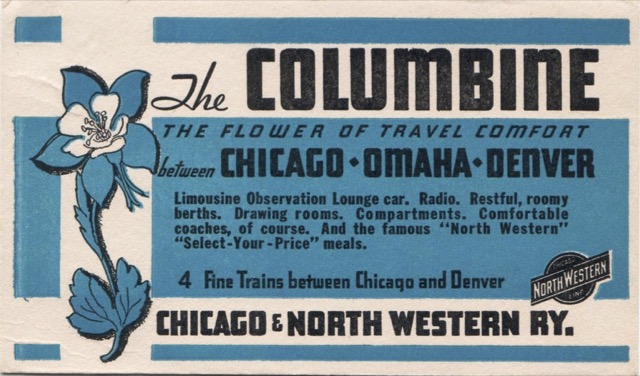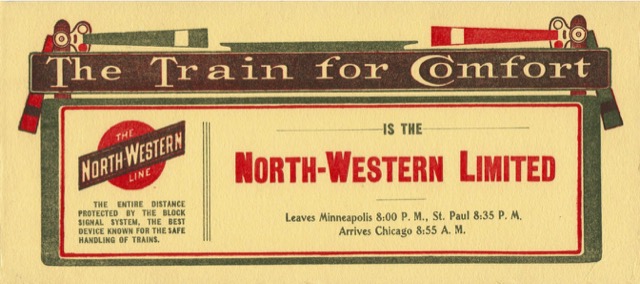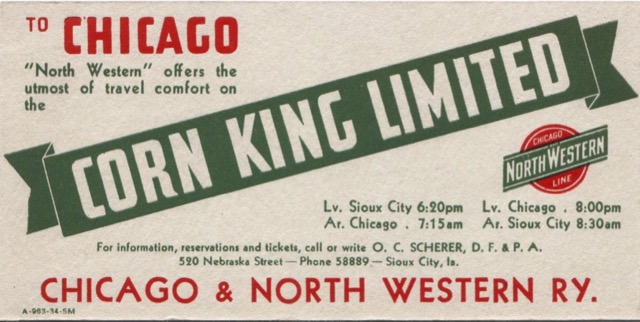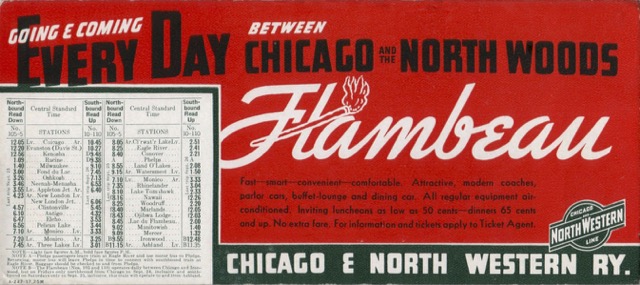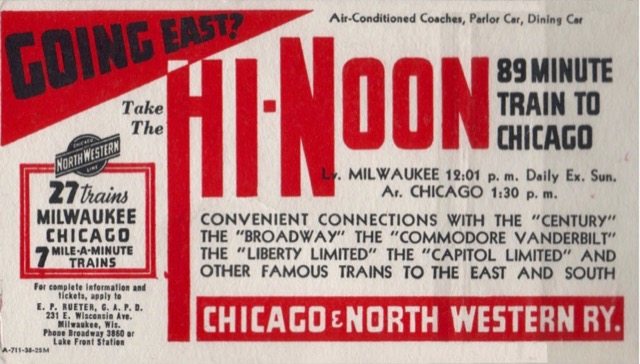These blotters from the Dale Hastin collection all advertise C&NW named trains that were less famous than the Overland, City, and 400 trains shown on previous blotters. The PDF files are about 300 to 600 KB in size.
This undated blotter advertises C&NW/UP’s premiere train on the Chicago-Denver route before the City of Denver. Inaugurated in 1929, this blotter is probably from that year or soon after.
The North-Western Limited was the railroad’s premiere train between Chicago and the Twin Cities before the 400 began operating in 1935. This blotter is probably from the 1920s or early 1930s.
The Corn King Limited connected Chicago with Omaha and continued on to Sioux City, Iowa. This blotter is dated 1934.
Named after a river in northern Wisconsin, the Flambeau was inaugurated in 1935 and streamlined and renamed the Flambeau 400 in 1950. This blotter is from 1937.
As the blotter notes, the Hi-Noon was just one of 27 trains a day that C&NW offered between Chicago and Milwaukee in 1938. The phrase “7 mile-a-minute trains” obviously doesn’t mean that the trains went 7 miles per minute (420 mph) but that seven of the 27 trains went the distance between the two cities at an average of 60 mph or more.

